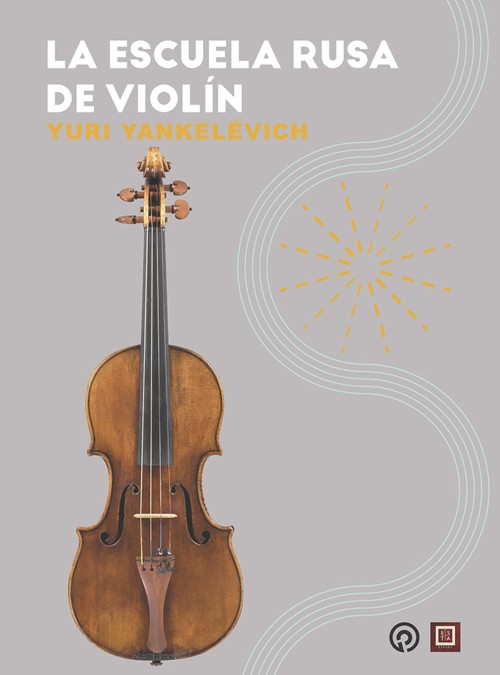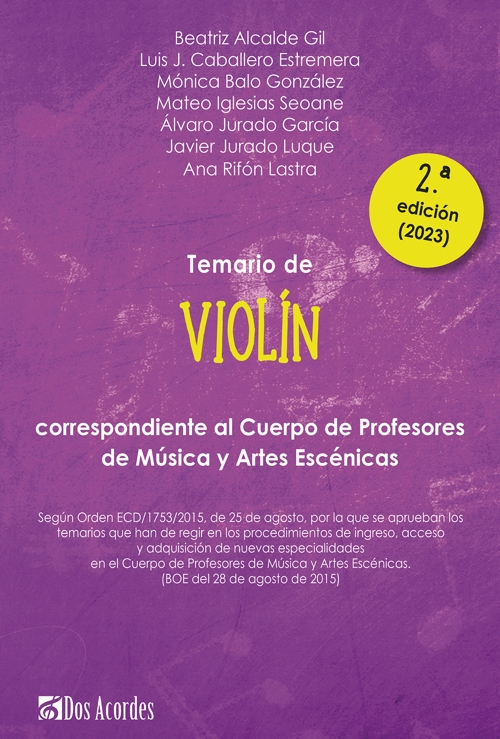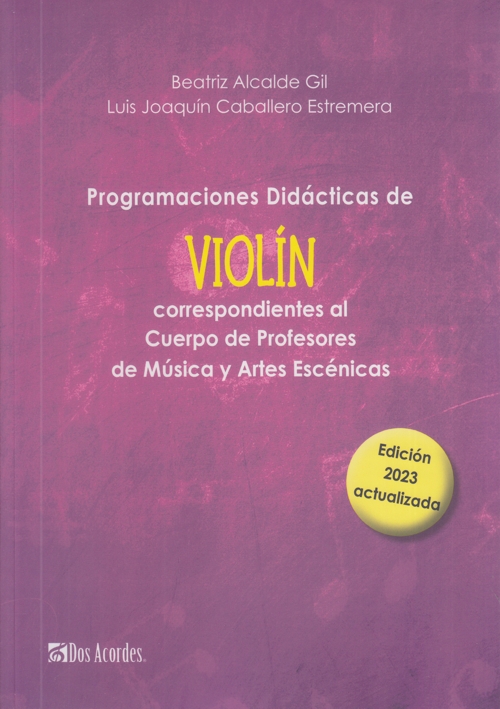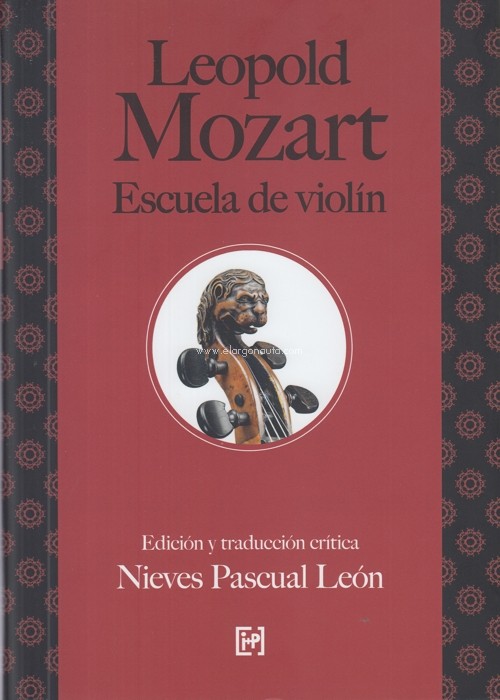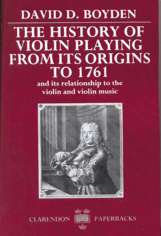
The History of Violin Playing From its Origins to 1761, and Its Relationship to the Violin and Violin Music
Boyden, David D.
Oxford University Press. 2002Ficha técnica
- EAN: 9780198161837
- ISBN: 978-0-19-816183-7
- Editorial: Oxford University Press
- Fecha de edición: 2002
- Encuadernación: Rústica
- Dimensiones: 15,5x23,5
- Idioma: Inglés
- Nº páginas: XXIV+569
Disponible en breve
Sin stock. Si se pide hoy, se estima recibir en la librería el 29/04/24¡GASTOS DE ENVÍO GRATIS!
PVP. 185,60€
Añadir a la Lista de deseos
David Boyden's classic book, first published in 1965, was the first to deal comprehensively with the history of violin playing against the vast panorama of the violin's evolution and the music written for it. Its principal theme is the manner in which the violin was actually played in past centuries, dealing with such practical questions as bowing disciplines in their national and historical evolution, the performance of staccato, the use of vibrato, the meaning of numerous and esoteric performing directions, the notation and performance of double stops, the rules of scordatura playing, and the sound of the violin in early times. Remaining an invaluable source of reference for the performance of early music, this book is now available for the first time in paperback.
Readership: Anyone interested in performance practice and the history of string playing.
CONTENIDO:
-Preface
-Acknowledgments
-List of plates
-List of figures
Part One: The Formative Period, 1520-1600
-General Introduction
I. The origin and development of the early violin, 1520-50
II. The advent of the true violin and its development to 1600
III. Violin music in the sixteenth century
IV. How the violin sounded and how it was played in the sixteenth century
Part two: The development of an idiomatic technique, 1600-1650
-Introduction: Social, political, and artistic conditions. Their impact on the violin
V. The development of the violin and bow in the early seventeenth century
VI. The new violin idiom. Violin music and its uses in different countries, 1600-50
VII. The technique and sound of the violin in the early seventeenth century
VIII. General matters affecting the violin to 1650
Part three: The national schools of the late seventeenth century. The rise of virtuosity
-Introduction
IX. The development of the violin and bow, 1650-1700
X. The violin music of the late seventeenth century
XI. The technique of the violin, 1650-1700 (I): National styles of playing. The treatises. The left hand
XII. The technique of the violin, 1650-1700 (II): The right hand and related questions. The sound of the violin
XIII. General matters affecting the violin, 1650-1700
Part four: The culmination of the early history of violin playing, 1700-1761
-Introducion: the "evolution of progress" theory
XIV. The violin and bow of the early eighteenth century
XV. The violin music of the early eighteenth century
XVI. The technique of the violin, 1700-61 (I): The treatises. Holding the violin and bow. The left hand
XVII. The technique of the violin, 1700-61 (II): The right hand. The bow stroke and bow change. The rule of down-bow
XVIII. The technique of the violin, 1700-61 (III): Bow strokes and their execution
XIX. The technique of the violin, 1700-61 (IV): Multiple stops. The "Bach" bow. Special effects. Instrumentation and conducting. The sound of the violin
XX. Specific and improvised ornaments. The cadenza
XXI. Tempo. Alterations of rhythm. Dynamics. Expression
XXII. Practical hints to modern violinists
-Appendix. Stradivari's birthday
-Bibliography
-Glossary
-Index


